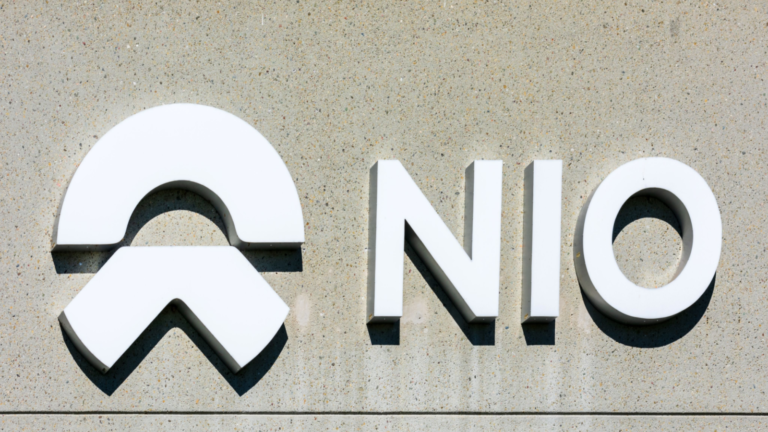Much like many EV startups, Nio (NYSE:NIO) has sparked heated debate. The company has been burning billions of dollars every year, with revenue declining the past two quarters as losses mount.
Meanwhile, the stock has plunged nearly 88% from early-2021 highs. Many wonder if Nio will stage a massive turnaround as revenue and earnings are expected to resume growing in coming quarters while losses narrow.
The key question for most investors is long-term viability. In other words, will Nio survive its cash burn long enough to deliver huge returns? Or will it flame out like other failed EV ventures? Let’s examine Nio’s cash position first.
How Much of a Concern Is Cash Burn and Dilution for NIO Stock?
Nio has around $4 billion in cash, roughly matching its debt levels. At the company’s current burn rate, that cash may only last two years. However, cash losses should be much lower over time. Additionally, as interest rates likely fall over the next year and EV sales potentially pick up, losses could be trimmed considerably in that timeframe.
Thus, I believe Nio can survive three or more years by cutting losses and taking on more debt. Beyond cash burn, share dilution is a valid concern, as many EV startups issue shares to fund losses.
However, Nio has been an outlier, with minimal dilution since early 2021 after considerable dilution in 2020. Could the company heavily start tapping equity markets again? Sure. But I don’t think Nio needs to dilute shareholders too much to fund losses as sales ramp up and rates decline.
Nonetheless, profitability remains about three years away, so there is a lot of uncertainty on this front.
Does NIO Stock Offer Good Value?
Nio’s 2032 profits are forecast to come in at $2.17 per share, putting the forward price-earnings ratio (2032 earnings) at just 3.5-times. This is quite decent value, and if you have a very long-term mindset, this might be a bet worth making.
Meanwhile, I don’t expect major Chinese EV inroads into the U.S. market, so Nio will likely carve out a niche in Europe and the Middle East with its battery-swappable EVs. Analysts estimate sales could still quintuple by 2032. Paying 1.6-times sales for this year’s earnings seems justified.
In my opinion, Nio is positioned for long-term gains and offers more value than most of its competitors if you look at the very long-term. Naturally, it could be a value trap, as there is no guarantee that Nio will execute on any of these long-term expectations.
Nio’s Technology Could Boost Its Niche Position
Looking past the numbers, Nio has technology that could cement its leadership in China’s premium EV segment. Its competitive edge includes the following:
- A battery swapping model avoids long charging waits, providing a superior user experience. Nio is far ahead of its competitors in this regard.
- Nio’s bold designs and premium interiors differentiate the company stylistically from budget Chinese EVs. Brand prestige aids pricing power.
- In-house manufacturing of key technologies like the NIO Pilot advanced driver assistance allows rapid iteration.
- NOMI AI in-car assistant offers intuitive voice controls and represents a key technology moat.
- Nio is also pioneering ownership models like battery subscriptions purchased separately from vehicles, which can provide some sticky revenue.
In my opinion, Nio’s technology can sustain its momentum despite economic challenges. Of course, execution risks exist, but the company’s tech foundations look promising.
Macro Trends Seem Supportive of NIO Stock Long-Term
Stepping back, China EV sales are projected to grow at a 18.4% compounded annual growth rate (CAGR) through 2030. Nio merely needs modest share gains to ride that vast wave. Government EV incentives should also provide tailwinds as the economy improves.
However, geopolitical tensions pose a wildcard risk. So far, Nio seems to retain Beijing’s support, giving confidence it can overcome hurdles like chip shortages. But I do not see it being too popular in the U.S.
Of course, near-term volatility remains likely. China’s economy faces headwinds, and EV sales have softened recently. Still, looking five to 10 years out, Nio has ingredients for potential upside if the company executes well.
The Bottom Line
Dilution worries me the most when it comes to NIO stock. With three or more years until the EV maker becomes profitable, it will likely be a turbulent ride. But at current prices, Nio appears reasonably-priced with a margin of safety.
Realistically, buying NIO stock as a long-term holding seems to be the only way to profit. Macro trends look favorable long-term. So, bargain hunters with a high-risk tolerance may be rewarded for buying NIO stock at depressed levels.
On the date of publication, Omor Ibne Ehsan did not have (either directly or indirectly) any positions in the securities mentioned in this article. The opinions expressed in this article are those of the writer, subject to the InvestorPlace.com Publishing Guidelines.

